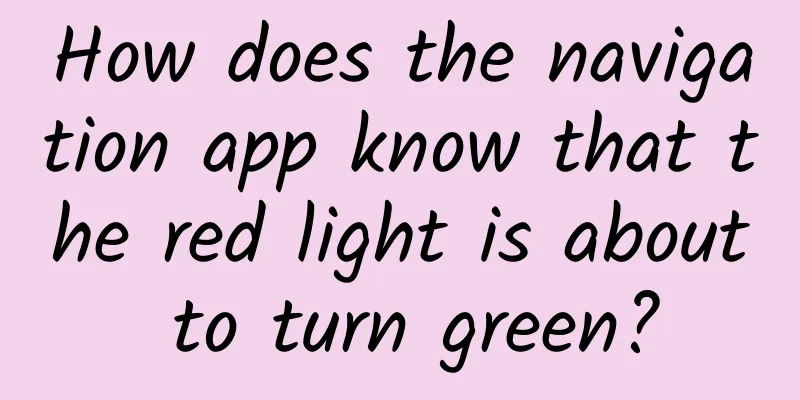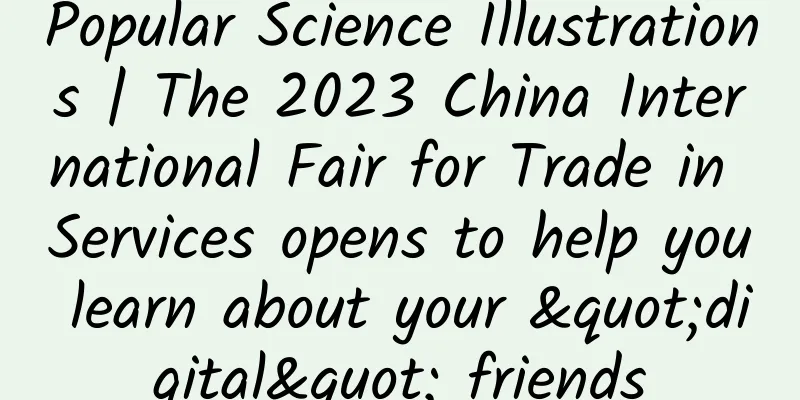How does the navigation app know that the red light is about to turn green?

|
With the continuous advancement of science and technology, the modern transportation system is undergoing an unprecedented transformation. Among them, the intelligent traffic management system is gradually becoming an important direction for the future development of transportation. Many navigation APP users have noticed this: when waiting for traffic lights, the navigation software can display the red light countdown in real time and give a reminder when the green light is about to turn on. This function not only improves the driving experience, but also improves traffic efficiency to a certain extent. So, have you ever wondered how navigation apps achieve this function? Support for intelligent traffic management systems To understand how navigation apps predict changes in traffic lights, we first need to understand the role of intelligent traffic management systems . Intelligent traffic management systems are a comprehensive system based on modern information technology that aims to improve the efficiency and safety of traffic systems by collecting, analyzing and controlling traffic data. The system relies on a large number of data sources , including the status of traffic lights, traffic flow, vehicle speed, weather conditions, etc. With the support of intelligent traffic management system, the status of urban traffic lights is monitored and managed in real time. The changes of traffic lights follow certain logic and timing, and this information is stored in the system . When the traffic management system receives data from road monitoring equipment, the system processes the data and adjusts the timing of the traffic lights to optimize traffic flow. This information can then be sent to the navigation app through the data communication network, allowing the navigation software to understand the current status of the traffic lights and when they are about to change. Satellite positioning and data communication In order for a navigation app to display the countdown of a traffic light in real time, in addition to the support of an intelligent traffic management system, it also needs to accurately locate the user's current location and obtain traffic light data. The satellite navigation system plays a key role here . Through satellite positioning, the navigation app can accurately determine the location of the vehicle and thus determine whether the vehicle is within the influence range of a certain traffic light. 🔺The world's four major satellite navigation systems When a vehicle approaches an intersection, the navigation app uses the positioning navigation data to identify the vehicle's location and requests the traffic light status information of the intersection through the data communication network. This information includes the current traffic light status, countdown time, and the estimated time of the next light change. In addition, in order to ensure the accuracy and timeliness of data, navigation apps usually maintain real-time connection with the city's traffic management system . When a vehicle approaches an intersection, the navigation app will continuously update the status of the traffic lights at the intersection to ensure the real-time countdown information. Algorithm processing and countdown display Once the navigation app obtains the status information of the traffic light, the next step is to realize the countdown display through algorithm processing . First, the navigation app will determine whether the vehicle is approaching a traffic light based on the vehicle's current position and driving direction. If so, the app will determine the current status of the traffic light and the time when the light changes. To ensure the accuracy of the countdown display, navigation apps usually apply complex algorithms to process the data obtained from the traffic management system. These algorithms not only take into account the switching time of traffic lights, but also combine factors such as vehicle speed, distance, and traffic flow for comprehensive analysis. Once the algorithm calculates the countdown time, the navigation app will display it on the screen. This process seems simple, but it actually involves a lot of data processing and calculations. Navigation APP countdown function Advantages and Challenges The traffic light countdown function provided by the navigation app brings many conveniences to drivers. First, it can help drivers better plan their driving routes and reduce unnecessary waiting time. For example, when the driver knows that the red light still needs to wait for a long time, he can choose to turn off the engine to save fuel. Secondly, the countdown function also helps improve traffic safety and reduce sudden braking and rear-end collisions caused by red light changes. However, there are some challenges in achieving this functionality. First, data accuracy is a key issue. Since the status information of traffic lights relies on the support of intelligent traffic management systems, if the system fails or data is delayed, the countdown information displayed by the navigation app may be inaccurate. In addition, since traffic management systems in different cities vary in technical level and data openness, this also affects the coverage and functional performance of navigation apps. Secondly, privacy is also a challenge that cannot be ignored. In order to provide an accurate countdown function, navigation apps need to obtain a large amount of location information and traffic data. This involves the issue of user privacy protection. Navigation service providers need to take effective measures to ensure the security of user data and prevent data leakage and abuse. In general, the navigation APP realizes the traffic light countdown function through a series of technical means such as intelligent traffic management system support, satellite positioning and data communication, algorithm processing, etc. This function not only improves the user's driving experience, but also provides valuable experience and technical accumulation for the development of future intelligent transportation. With the continuous advancement of technology, I believe that in the future, the functions of navigation APP will be more diversified and intelligent, bringing more convenience and safety to our travel. Planning and production Source丨Like Popular Science (ID: lxkp_cstam) Editor: He Tong Proofread by Xu Lailinlin |
>>: Why do people in Northeast China call winter "Maodong"?
Recommend
The medicine used to treat the prince in ancient times was so magical
Many Chinese medicines have legendary histories a...
"Help me up!" New research: Even at 60, your brain is still alive
Written by: Hao Jing: Editor: Kou Jianchao Layout...
The efficacy and function of Paulownia bark
In today's society, health preservation seems...
The efficacy and function of water aster
Traditional Chinese medicine is very effective in...
Hitwise: Ranking of Australian travel websites for the week ending August 20, 2011
In the ranking of Australian travel websites in t...
A single picture makes you a god! Flies that grow mushrooms, lizards that blow bubbles, fungi that glow...
From insects controlled by parasitic fungi to wax...
The efficacy and function of scissors
Most Chinese medicinal materials have good effect...
Can people with diabetes eat mooncakes? Be careful about "sugar-free mooncakes" and don't eat them casually
During the Mid-Autumn Festival, it is a Chinese c...
What are the benefits of drinking Cassia seed soaked in water?
Drinking Cassia seeds soaked in water has many be...
Why is it snow "flowers" instead of snow "grass" or snow "trees"?
Snow is a pure white gift from nature to people. ...
“Guide to Eating Out Safely” Series: Will your stomach agree to eating barbecue?
Although barbecue is delicious, it poses certain ...
The "magic medicine" that lowers the three highs can be taken once and last a lifetime
Taking Panax notoginseng, Salvia miltiorrhiza and...
How much honeysuckle is used?
Honeysuckle is a very common thing in daily life....
The efficacy and function of bitter bamboo
Bitter bamboo rhubarb is a relatively familiar tr...
The difference between Trichosanthes seeds and Melon seeds
From ancient times to the present, our country is...









